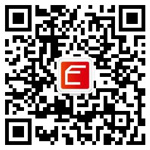当前位置:
首页
>
产品中心 >
monoclonal_antibody >
Hycult Biotech/TLR4/MD-2, Mouse, mAb MTS510, biotinylated/HM1030/50 µg

Hycult Biotech/TLR4/MD-2, Mouse, mAb MTS510, biotinylated/HM1030/50 µg
商品编号:
HM1030
品牌:
hycultbiotech
市场价:
¥4896.00
美元价:
2937.60
产品分类:
单克隆抗体
公司分类:
monoclonal_antibody
联系Q Q:
3392242852
电话号码:
4000-520-616
电子邮箱:
info@ebiomall.com
商品介绍
Description: TLR4/MD-2, Mouse, mAb MTS510, biotinylated
The monoclonal antibody MTS510 reacts with the Toll-like receptor 4 (TLR4, CD284) that is associated with MD2. TLRs are expressed by various cells of the immune system, such as macrophages and dendritic cells. TLRs are class I receptors, with a single α-helix that spans the cell membrane. They recognize and respond to molecules derived from bacterial, viral and fungal pathogens, such as lipopolysaccharide (LPS) from the outer membrane of Gram negative bacteria, peptidoglycan fragments from bacterial cell walls and single-stranded and double-stranded RNA from viruses.
Toll-like receptor 4 (TLR4; CD284) has been identified, next to MD-2 and CD14, as a receptor that is central to the innate immune response to LPS of Gram-negative bacteria. TLR4 is unique among TLRs in its ability to activate two distinct signaling pathways; one pathway is activated by the adaptors TIRAP (Toll/interleukin-1- receptor (TIR)-domain-containing adaptor protein) and MyD88, which leads to the induction of pro‑inflammatory cytokines. The second pathway is activated by the adaptors TRIF (TIR-domaincontaining adaptor protein inducing interferon‑β) and TRAM (TRIFrelated adaptor molecule), which leads to the induction of type I interferons.
MD-2 exists as a cell surface protein in association with TLR4. It also exists as secreted forms consisting of MD-2 monomer and multimers. Circulating sMD-2 is mainly present as a doublet of ~20 and 25 kD, representing differentially glycosylated forms. Unlike TLR4, sMD-2 binds directly LPS without the need of soluble CD14 (sCD14). However, LPS-MD-2 interactions are increased when LPS is pretreated with CD14. Only monomeric sMD-2 is biologically active and able to associate with TLR4 and LPS. sMD-2 circulates in plasma of healthy individuals as a non-active, polymeric protein. In septic plasma, the total amount of sMD-2 was strongly elevated and contained both sMD-2 polymers and monomers. Soluble MD-2 is proposed to be an important mediator of organ inflammation during sepsis. During experimental human endotoxemia, the monomeric and total sMD-2 content in plasma increased with the kinetics of an acute phase protein. This parallels enhanced TLR4 costimulatory activity. In vitro studies revealed that sMD-2 release appears to be restricted to endothelial and dendritic cells.
The monoclonal antibody MTS510 reacts preferentially, especially in flow cytometry, with mouse TLR4 that is associated with MD-2. MTS510 is a TLR4 function-blocking antibody that is useful for studies on the role of TLR4 as a receptor for LPS induced cytokine production by TLR4 bearing cells. The antibody was shown to coprecipitate MD-2 (30 kDa) with TLR4 (100 kDa).
Specifications:
| Catalog number | HM1030 |
|---|---|
| Product type | Monoclonal antibodies |
| Quantity | 50 µg |
| Formulation | 0.5 ml (100 µg/ml) 0.2 µm filtered biotinylated antibody solution in PBS, containing 0.1% bovine serum albumin and 0.02% sodium azide. |
| Conjugate | Biotin |
| Application | Flow cytometry, Frozen sections, Functional studies, Immuno precipitation |
| Application Notes | F: 6 µm acetone fixed sections blocked with 0.3% hydrogen peroxidase in methanol and subsequently with normal serum. Sections were incubated for 2h at RT at 1/100 dilution of mAb Fc: Cells were incubated with 0.1 µm mAb for 30 minutes at 4 °C FS: Cells were pre-incubated with 10 µg/ml of antagonistic mAb MTS510 RAW264.7 cells (105) were stained with 4 µg/ml mAb for 1h at 4 °C (black- isotype control, red- irrelevant mAb, Blue- HM1029) |
| Use | For immunohistology and flow cytometry dilutions to be used depend on detection system applied. It is recommended that users test the reagent and determine their own optimal dilutions. The typical starting working dilution is 1:50. |
| Immunogen | Ba/F3 cells expressing mouse TLR4 and MD-22 |
| Isotype | Rat IgG2a |
| Species | Mouse |
| Alias | Toll-like receptor 4:- TLR4, CD284, ARMD10 MD2: ESOP-1; myeloid differentiation protein-2; lymphocyte antigen 96 (Ly-96) |
| Positive Control | RAW264.7 cells |
| References | 1. Nomura, F et al ; Cutting edge: Endotoxin tolerance in mouse peritoneal macrophages correlate with down-regulation of surface toll-like receptor 4 expression. J Immunol 2000, 164: 3476 2. Akashi, S et al; Cutting edge: Cell surface expression and lipopolysaccharide signalling via the toll-like receptor 4-MD-2 complex on mouse peritoneal macrophages. J Immunol 2000, 164: 3471 3. Sato, S et al; Synergy and cross-tolerance between toll-like receptor (TLR)2- and TLR4-mediated signaling pathways. J Immunol 2000, 165: 7096 4. Ortega-Cava, C et al; Strategic compartmentalization of toll-like receptor 4 in the mouse gut. J Immunol 2003, 170: 3977 5. Tsujimoto, H. A critical role of CpG motifs in a murine peritonitis model by their binding to highly expressed toll-like receptor-9 on liver NTK cells. J hepatology 2006, 45: 836 6. Cook,C et al. Lipopolysaccharide, Tumor Necrosis Factor alpha, or Interleukin-1β triggers reactivation of latent CMV in immunocompetent mice. J virology 2006, 80: 9151 7. Tsukumo_D et al. Loss-of-function mutation in Toll-like receptor 4 prevents diet-induced obesity and insulin resistance. Diabetes 2007, 56: 1986 8. Burton, O et al. Importance of TLR2 in the direct response of T lymphocytes to Schistosoma mansoni antigens. Eur J Immunol 2010, 40: 2221 |
| Storage and stability | Product should be stored at 4 °C. Under recommended storage conditions, product is stable for one year. |
| Precautions | For research use only. Not for use in or on humans or animals or for diagnostics. It is the responsibility of the user to comply with all local/state and Federal rules in the use of this product. Hycult Biotech is not responsible for any patent infringements that might result with the use of or derivation of this product. |
| Disease | Infectious diseases |
品牌介绍
荷兰HyCult Biotechnology(HBT)位于荷兰乌登,从1994开始制造检测抗体和蛋白质,主要侧重与病理学诊断有关的全套产品研发,既有纯化的重组蛋白和多肽,也有单抗和多抗,是世界一流的先天免疫领域的研究试剂制造商。
联络我们



